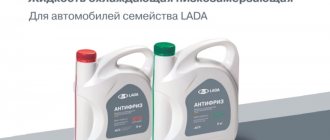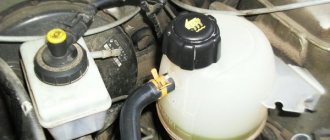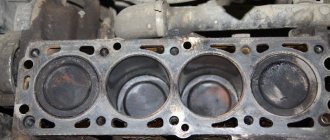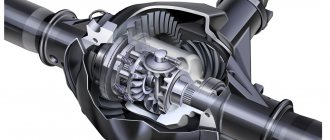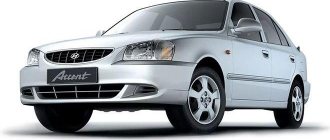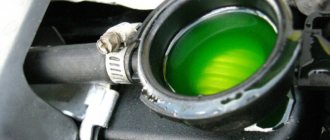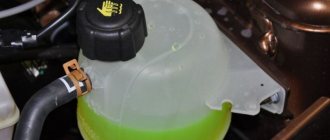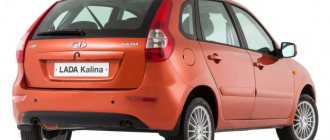To understand why TOSOL is needed and what it is, let’s dive a little into history.
To cool an internal combustion engine, a special coolant is required. For a long time, ordinary water was used as such a liquid. However, at low temperatures it freezes, so they began to add ethanol or ethylene glycol to it.
The freezing point of such liquids is much lower than that of ordinary water. The boiling point is slightly higher, and this also provides certain advantages. However, in operational terms, the mixture of water and alcohol left much to be desired.
As the automotive industry and technology have evolved, the need for higher levels of coolants has emerged. Those products that worked well with cast iron engines turned out to be of little use for new alloys.
Special anti-corrosion, anti-foam and other additives have made it possible to raise the level of performance properties of coolants.
Abroad, such materials began to be called antifreeze. The USSR created its own version of the coolant - TOSOL.
What are coolants used for in a car?
Coolant in the expansion tank of a car
During engine operation, it invariably overheats, especially at increased power, when operating at high speed or at sub-zero temperatures in winter. Overheating harms the engine and the car as a whole, leading to breakdowns and failure. Therefore, a running engine must be cooled.
Once upon a time there were air cooling systems - with blowing, but a more advanced one and used in all modern vehicles is a liquid cooling system. The liquid poured into it washes the heating engine, while cooling it and heating itself. Entering the radiator, it transfers heat to its plates and cools.
How is coolant different from water?
Coolant is not water. Water boils already at 100 degrees Celsius and expands when it freezes, which leads to rupture of pipes and other damage to the system. An inevitable consequence of its use will be corrosion - simply put, rust and destruction of the metal parts of the system.
Antifreeze also contains water, but the main component is alcohol (ethylene glycol, propylene glycol, monoethylene glycol, etc.), plus additives in the form of various chemical compounds that have anti-corrosion, lubricating properties, extend the service life of such a liquid and perform a number of other useful functions.
Interesting! It is customary to distinguish between antifreeze and antifreeze. In theory, the latter can be called any coolant. The English word antifreeze translates as “non-freezing.” That is, those who claim that these are one and the same are not so wrong. And antifreeze is a proper name that has long become a common noun. However, in our country it is customary to separate one from the other. Next, we will consider in detail what they are and how they differ.
What is TOSOL?
Antifreeze A-40M and OZh-40
Many motorists consider antifreeze to be a primitive antifreeze and have no idea what this name means and where it came from. So what is antifreeze anyway?
History of the creation of TOSOL
TOSOL is a coolant invented in the mid-20th century by Soviet scientists. Before this, there was only one domestic coolant - antifreeze according to GOST 159, as it was called (in some cases they also used water). This product was of poor quality. If it somehow managed to cope with its cooling duties, in other respects it left much to be desired: it foamed, quickly became unusable, and caused corrosion.
But the domestic auto industry did not stand still. The new Zhiguli model prompted scientists to think that a completely new quality of cooling was needed. The State Union Research Institute of Organic Chemistry and Technology has begun development. The work went on for three years.
Finally, scientists from the Department of Organic Synthesis Technology (abbreviated as TOS) managed to create a completely new antifreeze for Zhiguli. It was called TOSOL. This abbreviation consists of two parts: TOS - according to the name of the creator department, and OL - according to chemical nomenclature, this ending indicates that the substance contains alcohol.
Composition of TOSOL
In Soviet times, there was only one species, the composition of which was strictly regulated by the state standard. Currently, this name is widely used by various manufacturers in Russia and the CIS countries, the composition of which varies and is regulated by their own specifications. Therefore, the quality of such liquids varies.
However, the liquid, called antifreeze, is always based on ethylene glycol and distilled water. Glycerin is also often used. The difference mainly lies in the additives. Silicates, sodium benzoate, borax (borates), sodium benzoate, sodium nitrite, captax, dextrin, butanol, defoamer are used. Their presence or absence, as well as the percentage, vary from manufacturer to manufacturer.
Other features of TOSOL
What color is TOSol?
Antifreezes are usually painted blue or dark blue - like the very first, Soviet one. However, the choice of dye is arbitrary and does not affect the characteristics and properties of the liquid in any way. Therefore, in theory, the manufacturer can give it any shade - for example, red (used for antifreeze-65), green or yellow.
Freezing and boiling points
Classic antifreeze provides protection against freezing down to -40 degrees, and protection against boiling - on average up to +110 degrees Celsius. However, there are also concentrated versions of this refrigerant (like antifreeze), as well as a composition marked -65, that is, providing protection down to minus 65 degrees Celsius and suitable for northern regions.
The first TOSOL was developed specifically for the Zhiguli brand. Its descendants produced today also, as a rule, have approvals and recommendations for domestic cars, both passenger cars and trucks, and specialized equipment.
Antifreeze marked -65 is recommended for use in heavy industrial, cargo, and construction equipment forced to work in the Far North. Most antifreezes are suitable for VAZ, UAZ, KAMAZ and other Russian-made vehicles.
Such a cooler has a short lifespan - up to two years, or 50-60 thousand kilometers.
What is antifreeze?
Antifreeze G12+ and G11
Antifreeze, as already mentioned, comes from the English word “anti-freeze”. That is, it is a liquid that does not freeze in cold weather. Let's try to figure out what liquids are common today under this name.
Antifreeze is a coolant for modern internal combustion engines, which contains an alcohol (glycerin) base and additives. Actually, the additives, which differ from those used in antifreeze and from each other, are the whole point.
What types of antifreeze are there?
All antifreezes existing today, depending on the composition and production technology, can be divided into two large groups - silicate, produced using traditional technology, and carboxylate, produced using organic acid technology. There are also options where both are involved, and it’s easy to get confused with all these differences.
There is no international classification of antifreeze. Therefore, many manufacturers secretly adopted as a standard the system of standards that was originally invented and used by the Volkswagen concern for its own coolants. Borrowing it allows you to sort all types into shelves.
Antifreeze classification
The following standards are currently used:
- G11. Traditional, or silicate. It contains ethylene glycol, silicates and other inorganic substances: phosphates, borates, nitrites, nitrates, amines. In this respect, antifreeze is similar to antifreeze - as was written above, it also contains various compounds. Such coolants cover the parts of the cooling system from the inside with an even layer, which provides them with lubrication and protects them from wear and corrosion. However, this same layer significantly worsens heat transfer, and precipitates due to vibration and temperature changes. Therefore, it is better to change such fluid at least once every two years.
- G12. Refrigerants of this standard are the next generation. They are based on the technology of organic (carboxylic) acids. That's why they are called carboxylate. They do not contain silicates, as well as their entire company in the form of borates, amines, nitrates and other compounds. Such liquids do not create any layer on the surface of the parts, resulting in excellent heat transfer. But against corrosion, they act in a targeted manner - that is, directing inhibitors to where this corrosion has already begun. Unfortunately, carboxylate antifreezes cannot prevent it from starting.
- G12+. The so-called hybrid antifreeze. When creating it, manufacturers decided to combine all the best that exists in traditional and carboxylate technologies and mixed organic additives with inorganic ones. As a result, such a composition simultaneously creates a protective layer and destroys already existing foci of corrosion.
- G12++. An even more advanced carboxylate refrigerant. It contains mineral additives added to the organic base.
- G13. This is the newest generation of coolant. Lobride antifreeze is produced not on the basis of ethylene glycol (and its variations), but on propylene glycol. Unlike its predecessor, it is not poisonous and is considered environmentally friendly. And such refrigerants have an almost unlimited service life.
Each of these standards has its own advantages and disadvantages, so each has its own connoisseur.
Antifreeze color
Antifreeze in different colors
Antifreeze can be found in almost any color. There is a common myth that the same colors mean the same properties, which means that green can be safely added to green, and red to red. This is a misconception.
In fact, all coolants (including antifreeze!) are themselves transparent and colorless. They began to add dye to them because they are poisonous, so as not to be confused with water. By the way, for the same reason, a bitter flavoring additive is added to many foreign-made refrigerants so that, for example, a child cannot drink too much out of curiosity and end up poisoned.
The second reason for adding dye is to quickly find and repair leaks. Many manufacturers also add a fluorescent component for this purpose.
Important! The dye does not in any way affect the composition and properties of the product, and there are no standards regulating the choice of shade. Therefore, the choice remains with the manufacturer. This is why you should not mix antifreeze by color.
However, although there are no standards in this regard, most manufacturers try to adhere to the following rules:
- Coolant G11 – blue, light blue, green, blue-green, turquoise;
- Coolant G12 (with and without pluses) – all shades of red, orange;
- Coolant G13 – pink, purple.
It's approximately. In fact, there are carboxylate liquids that are green and lobrid liquids that are yellow. Some manufacturers have entire lines in which the same antifreeze composition is painted, for example, in four different colors.
Temperature Range
The temperature range of modern coolants is also different. The boiling point is approximately at the same level – +110-115 degrees Celsius. But the freezing temperature varies. Most ready-to-use coolants operate to a limit of minus 36-40 degrees Celsius. There are options for the northern regions - minus 50 and 65.
In addition, there are coolant concentrates. They cannot be used in pure form; they must be diluted with distilled or demineralized water. The temperature at which crystallization begins depends precisely on the percentage of water and base.
Scope and terms of use
There is a wide variety of antifreeze on the modern market. Therefore, you can choose your own option for a car of any brand, domestic and foreign, old and new, with different types of engines and the fuel on which it runs.
The shelf life of antifreeze also varies depending on its composition and production technology. For most traditional ones it is 2-3 years, for carboxylate ones - 5 years, for lobrid ones - from 5 years and above. However, this is all approximate. In addition to the replacement interval for the coolant itself, you also need to take into account the recommendations of the car manufacturer.
Colors
Color does not affect the physical parameters of the product in any way. Even colorless antifreezes work effectively, and dyes are added to make it easier for drivers to distinguish between different types of coolants. However, there is no strict standardization that would apply to the color of antifreeze, so today many manufacturers (for example, Volkswagen) paint antifreeze in colors that they deem necessary.
As for mixing antifreezes of different colors and brands with each other, this is also not recommended, although it is actively practiced by many drivers. The fact is that different brands of antifreeze may contain different additives. They may not get along well with each other, which is why some of them will fall apart. Thus, the operating parameters of the liquid will change, and as a result, the cooling efficiency will drop.
What is better to use, antifreeze or antifreeze?
To answer this question, you need to understand the difference between antifreeze and antifreeze, but, as mentioned above, antifreeze is also antifreeze. Therefore, the question should not be either/or, but which antifreeze is best to use?
There can be no clear answer to this question. There are no fundamental differences between antifreeze and, for example, G11 antifreeze. They have similar composition, properties and validity period, i.e. G11 antifreeze is essentially the same antifreeze.
In which cars is it better to fill antifreeze, and in which TOSol?
There is an opinion that antifreeze is suitable for old domestic cars, and antifreeze is suitable for foreign cars. This is partly true, since the cooling system of the same “Zhiguli” is less demanding. However, there are people who successfully use antifreeze in foreign cars.
Therefore, when wondering how to make the right choice, you need to be guided by the conditions under which the car is operated, at what temperatures, and what the car manufacturer recommends. When choosing a fluid, you need to remember the replacement interval.
So, antifreeze will have to be changed often, and, for example, lobride antifreeze - rarely. But the cost of the first one will be several times lower. The tolerances and recommendations indicated on the liquid itself are especially important.
And, of course, quality. Now there are many poorly made coolants, as well as fakes, which are simply dangerous to use. And low-quality carboxylate fluid will be much more harmful to the engine than high-quality antifreeze.
Therefore, you can determine whether antifreeze or antifreeze is better to use only by deciding for yourself what is a priority and choosing a truly high-quality product.
Recommendations for selection
Today you can find dozens of different types of coolant in specialized stores. Such diversity significantly complicates the choice of car owners who cannot figure out what kind of antifreeze there is. When choosing, you should know why antifreeze is needed in the car and pay attention to the following indicators:
- Freezing temperature.
- Color.
- Taste and smell.
- Label.
- Tara.
Freezing temperature indicators will depend on the density of the liquid, as well as the mass fraction of propylene glycol content in it. The cost of antifreeze directly depends on its freezing point, so by making the right choice, you can save a lot. The golden mean will be the coolant, whose freezing point is at 30-40 degrees. This antifreeze will be sufficient for use on cars in central Russia.
The color of the liquid has no bearing on the characteristics or physical properties of the product. Most experts recommend giving preference to colored antifreezes, while mixing coolant of the same color in the engine is allowed.
High-quality antifreeze will have a pronounced sweetish odor. But you should not taste the coolant, since it is a toxic substance, and a small amount of methylethylene glycol entering the body can lead to poisoning.
A well-made branded antifreeze will have a label indicating the product markings, as well as all its technical characteristics. It’s still not worth purchasing antifreeze, the canister of which has a label of unknown origin. With a high degree of probability, this is not a very high-quality product, the use of which can only harm the car engine.
Is it possible to mix TOSOL and antifreeze?
Another frequently asked question is, is it possible to mix antifreeze and antifreeze? Since, again, we found out that antifreeze is a type of antifreeze, it would be more appropriate to ask whether it is possible to mix antifreezes with each other?
Important! It is worth knowing that you should not mix different coolants with each other unless absolutely necessary. Even having a similar composition, they may not match in some ways (for example, the quality of additives), so the quality of the mixture will be worse than the quality of each of them separately.
Therefore, you can add another coolant only in extreme cases and a little at a time. But pouring in whatever comes to hand without understanding what is in the tank is downright dangerous. Conflicting additives can turn the liquid into a gel or form a heavy sediment.
Is it possible to mix antifreezes of the same color?
You can also come across harmful advice to add antifreeze according to color. This is incorrect, since color is just a choice of the manufacturer and does not mean belonging to any category. The only thing you need to be guided by when choosing a top-up is technology and composition.
Can coolants of different colors be mixed?
As we have already determined, the color of the cooler does not affect its composition, since it is just a dye. If necessary, it is better to mix substances that are the same in composition, for example, antifreeze G11 can be mixed with the same, hybrid or antifreeze. Carboxylate - mix with carboxylate. Under no circumstances should carboxylate antifreeze be mixed with traditional antifreeze or antifreeze!
If possible, it is better to choose a cooler from the same manufacturer or, more simply, just refill the same one.
We detect loss of refrigerant properties
There are some parameters by which you can determine how long it is time to replace antifreeze:
- cloudy color;
- sediments in the form of rust, foam, scale particles and other formations in the liquid;
- decrease in coolant level.
If you find at least one point in the tank, you should understand that it’s time to worry about changing the antifreeze.
One of the most effective methods for determining the quality of coolant is the use of special test strips, which, when immersed in a tank of antifreeze, acquire a certain shade.
Can antifreeze be mixed with water?
Motorists most often ask this question in the summer. The coolant can evaporate and you have to choose between buying another liter of chemicals or just adding water.
If you look at the service book, then all questions disappear. The automaker strictly prohibits diluting antifreeze with water.
Pouring ordinary water into the cooling system can lead to clogging of the CO radiator, corroding aluminum engine parts and reducing the protective properties of the liquid. If domestic cars can still withstand this mixture, then it is better not to experiment with foreign cars.
Where to buy?
You need to purchase antifreeze in a place where all questions and complaints, if any, will be answered. The store where you purchase antifreeze must guarantee the quality of the product. You should not buy coolant at auto parts markets, because sellers there can sell you anything. In addition, they do not issue receipts, so the likelihood of buying a fake in such a place is extremely high. Under no circumstances should you buy this product from sellers whose reputation you are not sure of. It's better to overpay a little, but buy a really good product. Otherwise, a small saving of a couple of tens of rubles can result in expensive repairs to the engine or cooling system.
How to switch from antifreeze to antifreeze?
The instructions for switching from one liquid to another are very simple, but before doing this, make sure that your car is allowed to be filled with the selected refrigerant.
Fluid change procedure:
- The car is fixed on a viewing hole or overpass with a cooled (switched off) engine.
- The battery terminal and ignition module are disconnected (on some domestic cars).
- The drain plug, tank cap and radiator cap are unscrewed. All liquid is drained.
- All plugs are screwed back in, distilled water is poured in and passed through the cooling system with the engine running. This washing is repeated a couple of times.
- After draining the flushing composition, it is necessary to fill in antifreeze, remove air pockets, tighten all caps and start operating the car.
- Add the required amount of antifreeze after running in.
